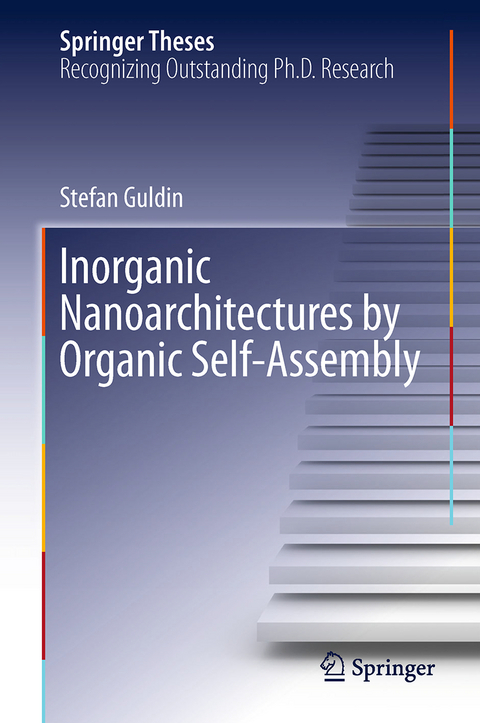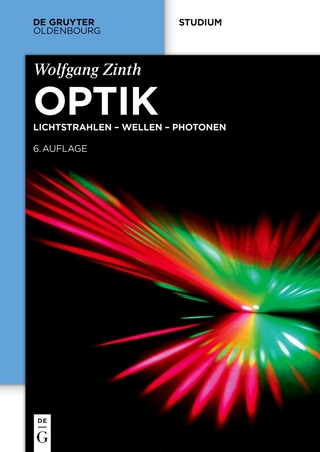
Inorganic Nanoarchitectures by Organic Self-Assembly
Seiten
2015
Springer International Publishing (Verlag)
978-3-319-03288-7 (ISBN)
Springer International Publishing (Verlag)
978-3-319-03288-7 (ISBN)
This book explores the implementation of soft matter design principles for inorganic thin film nanoarchitectures. It presents novel and unique methods of employing soft matter self-assembly for photonic and optoelectronic.
Macromolecular self-assembly - driven by weak, non-covalent, intermolecular forces - is a common principle of structure formation in natural and synthetic organic materials. The variability in material arrangement on the nanometre length scale makes this an ideal way of matching the structure-function demands of photonic and optoelectronic devices. However, suitable soft matter systems typically lack the appropriate photoactivity, conductivity or chemically stability. This thesis explores the implementation of soft matter design principles for inorganic thin film nanoarchitectures. Sacrificial block copolymers and colloids are employed as structure-directing agents for the co-assembly of solution-based inorganic materials, such as TiO_2 and SiO_2. Novel fabrication and characterization methods allow unprecedented control of material formation on the 10 - 500 nm length scale, allowing the design of material architectures with interesting photonic and optoelectronic properties.
Macromolecular self-assembly - driven by weak, non-covalent, intermolecular forces - is a common principle of structure formation in natural and synthetic organic materials. The variability in material arrangement on the nanometre length scale makes this an ideal way of matching the structure-function demands of photonic and optoelectronic devices. However, suitable soft matter systems typically lack the appropriate photoactivity, conductivity or chemically stability. This thesis explores the implementation of soft matter design principles for inorganic thin film nanoarchitectures. Sacrificial block copolymers and colloids are employed as structure-directing agents for the co-assembly of solution-based inorganic materials, such as TiO_2 and SiO_2. Novel fabrication and characterization methods allow unprecedented control of material formation on the 10 - 500 nm length scale, allowing the design of material architectures with interesting photonic and optoelectronic properties.
From the Contents: Self-Assembly of Soft Matter.- Optical aspects of thin films and interfaces.- Structure-function interplay in dye-sensitised solar cells.- Experimental and analytical techniques.- Block copolymer-induced structure control for inorganic nanomaterials.- Crystal growth in block copolymer-derived mesoporous TiO_2.
| Erscheint lt. Verlag | 9.7.2015 |
|---|---|
| Reihe/Serie | Springer Theses |
| Zusatzinfo | XVII, 165 p. |
| Verlagsort | Cham |
| Sprache | englisch |
| Maße | 155 x 235 mm |
| Themenwelt | Naturwissenschaften ► Physik / Astronomie ► Optik |
| Technik ► Elektrotechnik / Energietechnik | |
| Schlagworte | Designed Nanoscale Structures • Inorganic Thin Film Nanoarchitectures • Macromolecular Self-assembly • nanoscale science and technology • optical and electronic materials • Physics and Astronomy • Soft Matter Self-assembly • Surface and Interface Science, Thin Films • Tailored Optoelectronic Properties • Tailored Photonic Properties • Thin-film Nanoarchitectures |
| ISBN-10 | 3-319-03288-7 / 3319032887 |
| ISBN-13 | 978-3-319-03288-7 / 9783319032887 |
| Zustand | Neuware |
| Informationen gemäß Produktsicherheitsverordnung (GPSR) | |
| Haben Sie eine Frage zum Produkt? |
Mehr entdecken
aus dem Bereich
aus dem Bereich
Lichtstrahlen – Wellen – Photonen
Buch | Softcover (2025)
De Gruyter Oldenbourg (Verlag)
CHF 104,90
Grundlagen - Verfahren - Anwendungen - Beispiele
Buch | Hardcover (2022)
Hanser, Carl (Verlag)
CHF 69,95


